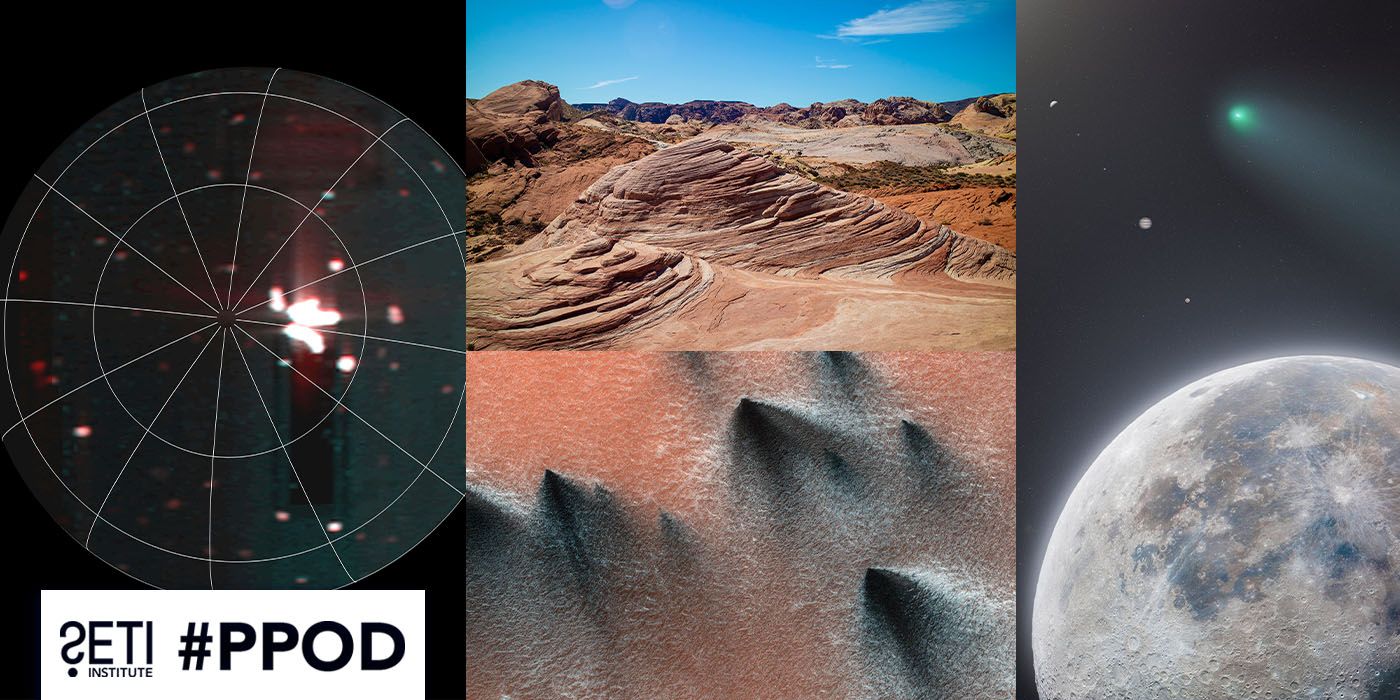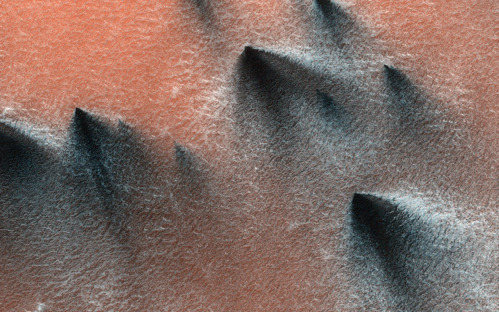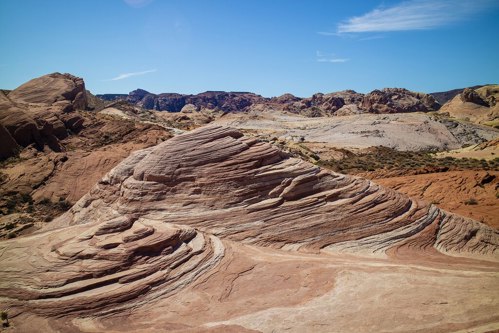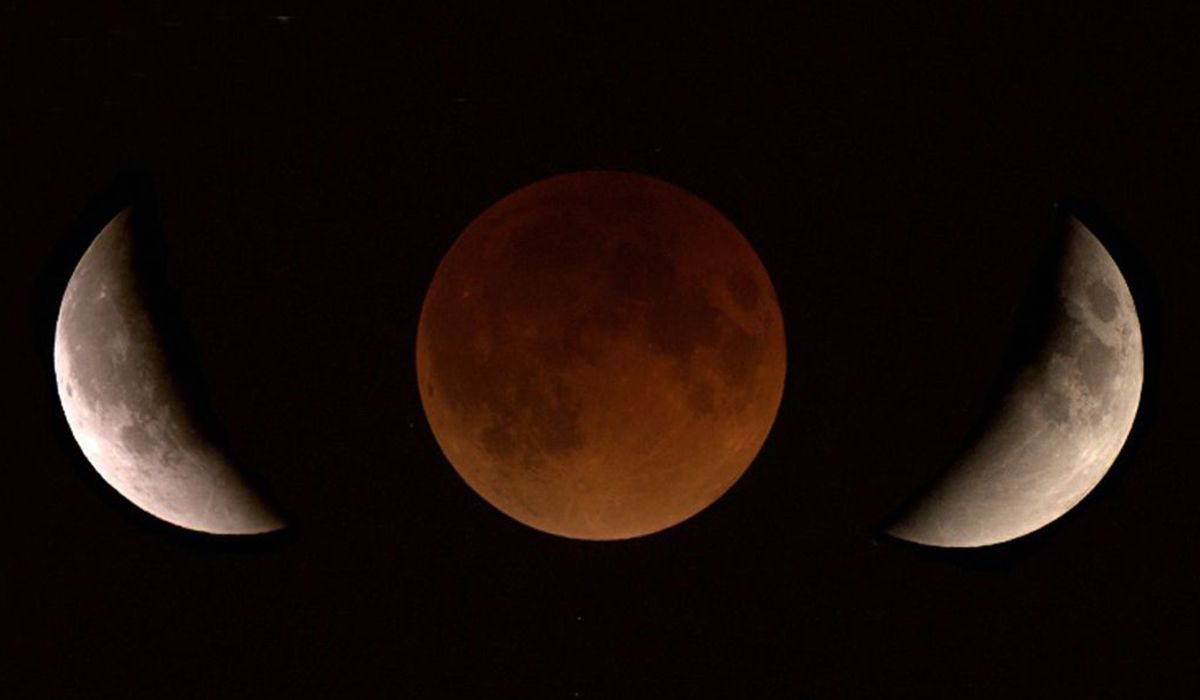
Planetary Picture of the Day
Week of January 28, 2025
Interesting features on our world and other worlds, as well as a planetary parade!
Tuesday, 28 January 2025

Credit: NASA/JPL-Caltech/SwRI/ASI/INAF/JIRAM
Massive Hot Spot on Io
A massive hot spot near the south pole of Io can be seen near the center of this annotated image taken by the JIRAM infrared imager aboard NASA's Juno on Dec. 27, 2024, during the spacecraft's flyby of the Jovian moon. The hot spot is larger than Earth's Lake Superior.
At the time of closest approach during the flyby, Juno came within about 74,400 kilometers of the moon.
Wednesday, 29 January 2025

Credit: Andrew McCarthy
Planetary Parade
Reports of a recent "planetary alignment" were definitely exaggerated; however, photographer Andrew McCarthy captured the entire "planetary parade" using an 11" telescope. Each picture was combined into one composite photo that stayed true to the angular scale of the objects, from top to bottom: Saturn, Venus, Neptune, Uranus, Jupiter, and Mars. The comet is comet G3 ATLAS.
Thursday, 30 January 2025

Credit: NASA/JPL-Caltech/University of Arizona
Geyser Season on Mars
This Oct. 29, 2018, image from the HiRISE camera on NASA’s Mars Reconnaissance Orbiter captures geysers of gas and dust that occur in springtime in the South Polar region of Mars. As the Sun rises higher in the sky, the thick coating of carbon dioxide ice that accumulated over the winter begins to warm and then turn to vapor. Sunlight penetrates through the transparent ice and is absorbed at the base of the ice layer. The gas that forms because of the warming escapes through weaknesses in the ice and erupts in the form of geysers.
HiRISE, or the High Resolution Imaging Science Experiment, is a powerful camera that takes pictures covering vast areas of Martian terrain while being able to see features as small as a kitchen table.
Friday, 31 January 2025

Credit: Thomas Farley via Wikimedia Commons
Fire Wave
Valley of Fire State Park is a public recreation and nature preservation area covering nearly 46,000 acres near Overton, Nevada. The park features Aztec Sandstone, which was formed from shifting sand dunes 150 million years ago. The landscape was created by complex uplifting and faulting of the region, followed by extensive erosion. This formation is known as the Fire Wave, similar to the Wave in Arizona.
News
Related News

Total Eclipse of the Moon Coming to the Americas on the Night of March 13-14
Photo by Brian Day NASA #PRODS
Earth Detecting Earth
Figure 1. The maximum distances that each of Earth’s modern-day technosignatures could be detected at using modern-day receiving technology, in visual form. Also marked are various astronomical objects of interest. #PRODS
Planetary Picture of the Day - Week of January 27, 2025
Planetary Picture of the Day - Week of January 27, 2025 #PRODS
SETI Institute in the News: February Roundup
SETI Institute in the News: February Roundup #PRODSResearch
Related Projects

Lorem ipsum
Lorem ipsum dolor sit amet #PRODS
Nemo enim ipsam voluptatem
Nemo enim ipsam voluptatem quia voluptas sit #PRODS
Duis aute irure
Duis aute irure dolor in reprehenderit in voluptate #PRODSSupport the
SETI Institute
Scientists are getting closer in their search for life beyond earth. But with limited federal funding for the search for extraterrestrial intelligence, supporters are the reason cutting-edge scientists can keep their eyes on the sky.

)

